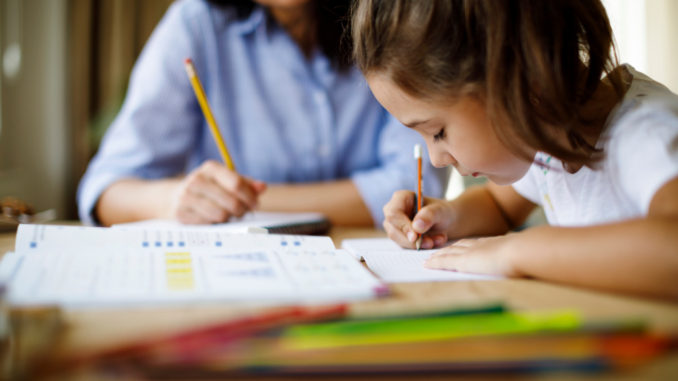
After weeks of uncertainty, it’s now obvious that the vast majority of California’s six million public school students will be staying, and presumably studying, at home this fall, rather than returning to the classrooms they hastily abandoned four months ago.
After the nation’s second largest school system, Los Angeles Unified, and San Diego Unified jointly declared that they will continue with “distance learning” indefinitely, other local school districts, with very few exceptions, are falling in line.
Los Angeles and San Diego officials cited the recent resurgence of COVID-19 cases and concerns about the health of students, teachers and other school workers in making their decisions, but pressure from politically powerful teacher unions was no small factor.
The question, of course, is whether the pandemic’s threat, which is real, outweighs the loss of classroom instruction, especially among the 60 percent of California’s K-12 students who are classified as “high needs” due to poverty and/or deficiencies in English language skills.
Those kids — mostly Black and Latino — are already on the short end of a very wide “achievement gap” that schools are supposedly trying to close and there’s little doubt that the home-based schooling that was haphazardly implemented in March widened the gap further.
An internal study by Los Angeles Unified reveals that only 60 percent of its students used an on-line instruction portal each day and at-risk children were markedly less likely to participate in the district’s cyber-classes than more advantaged students. “Low participation may show loss learning, which could take students years to recoup,” it found.
On paper, on-line learning will be more organized as the 2020-21 school year begins because the state budget package contains oodles of new requirements that schools must meet, including verifiable daily participation and formal plans filed with the state, to ensure that kids are receiving quality instruction.
The new Learning Continuity and Attendance Plans (LCAPs) replace, at least temporarily, the Local Control and Accountability Plans (LCAPs) that have been required for nearly a decade as part of the state’s program to close the achievement gap.
However, the cavalier, self-serving manner in which the old LCAPs were written does not engender confidence that the new plans will be anything more than bureaucratic paper shuffling, designed to give the illusion that school systems are doing what they are supposed to be doing for underachieving youngsters.
Stripped to its essentials, California is conducting a gigantic — albeit accidental — experiment, testing whether on-line instruction is a credible substitute for the traditional classroom setting, or at least a valuable supplement to in-person schooling. It seems to work fairly well for college-level students, but its worth for those in elementary school, where basic language and mathematics skills are foremost, is a great unknown.
We don’t know how long the pandemic will pose a threat, so we don’t know how long our kids will remain at home, supposedly paying attention to classes on their computer screens. And we certainly don’t know whether, or how much, their educations will be stunted.
Since it is an experiment, we should treat it as such and collect all the data possible so that researchers can look back on what happened in 2020, and perhaps beyond, and evaluate the outcomes.
It underscores the importance of implementing a comprehensive system of integrated student performance data that, by happenstance, is now in the planning stage after decades of political blockage. If done correctly, CALPADS will enable us to see how today’s distance learning students fare during the remainder of their educational careers and into their lives as working adults.
CalMatters is a public interest journalism venture committed to explaining how California’s state Capitol works and why it matters. For more stories by Dan Walters, go to calmatters.org/commentary






